
How to Use LiPo Battery 3.7 V 1050mAh: Examples, Pinouts, and Specs
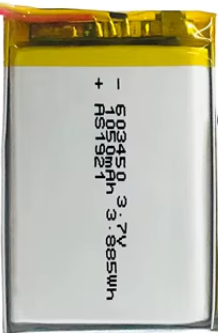
 Design with LiPo Battery 3.7 V 1050mAh in Cirkit Designer
Design with LiPo Battery 3.7 V 1050mAh in Cirkit DesignerIntroduction
The LiPo Battery 3.7 V 1050mAh (Manufacturer Part ID: AS603450) by A&S Power is a lightweight, high-energy-density lithium polymer rechargeable battery. With a nominal voltage of 3.7V and a capacity of 1050mAh, this battery is ideal for powering portable electronics, remote-controlled (RC) devices, IoT gadgets, and other compact systems requiring reliable energy storage.
Explore Projects Built with LiPo Battery 3.7 V 1050mAh
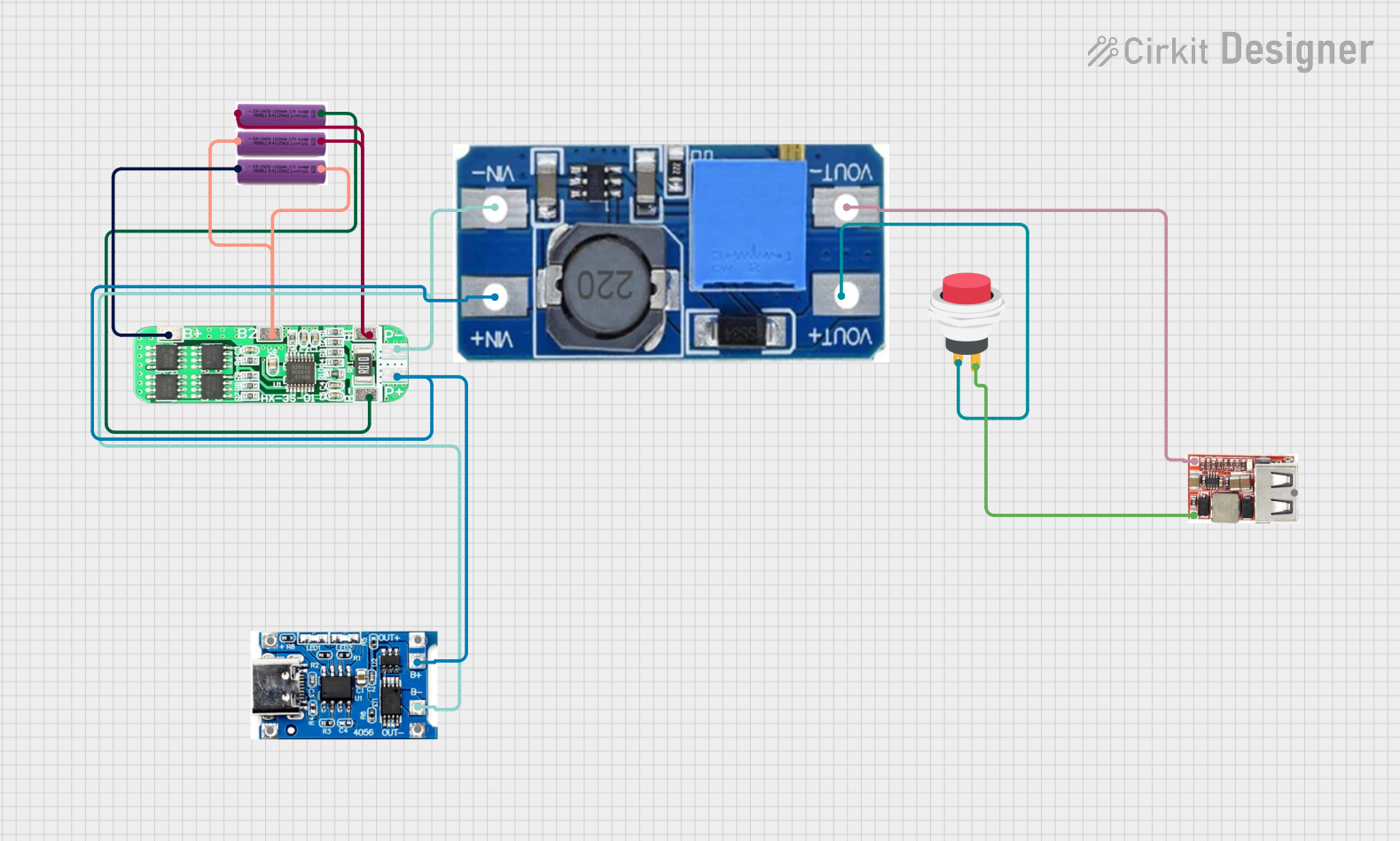
 Open Project in Cirkit Designer
Open Project in Cirkit Designer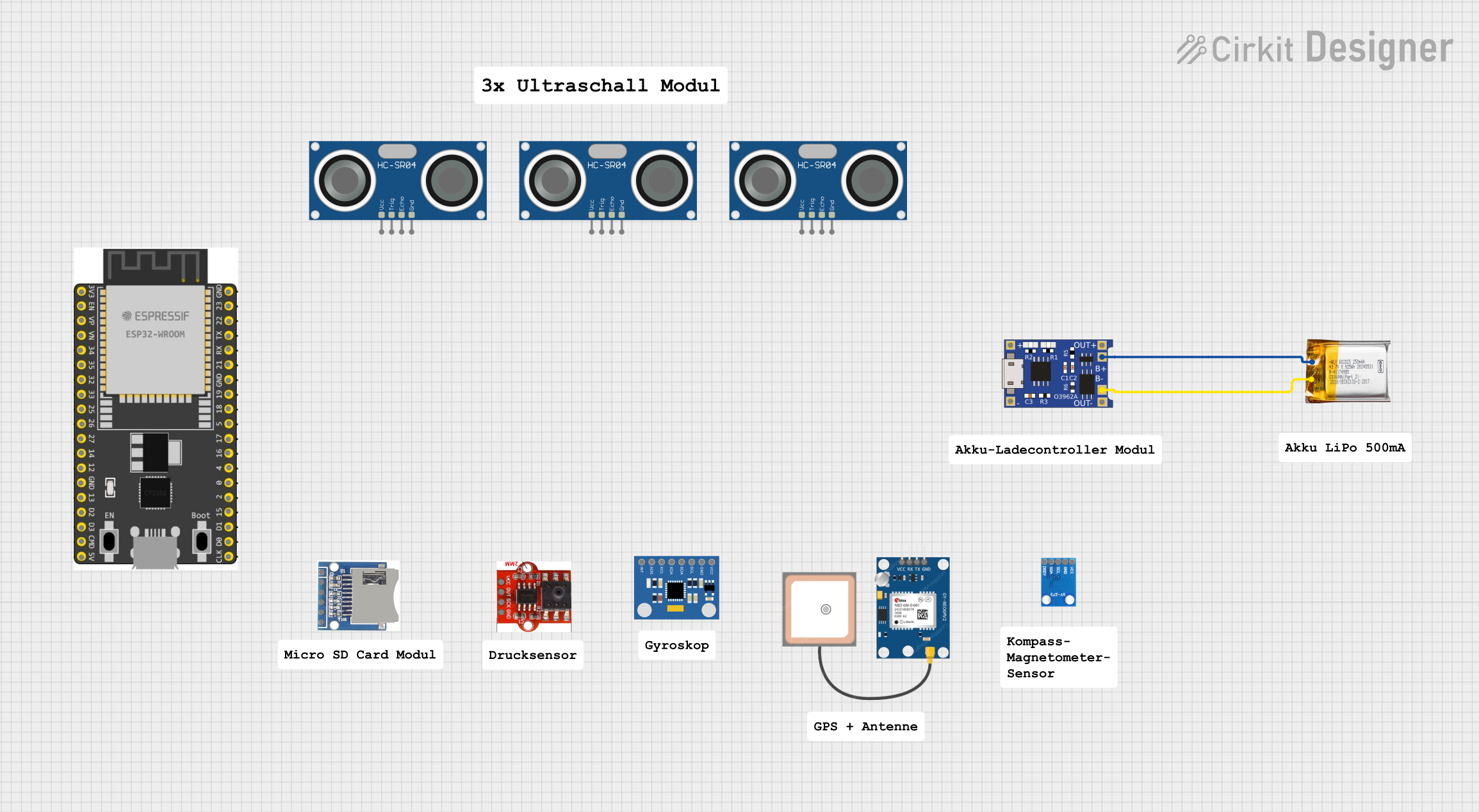
 Open Project in Cirkit Designer
Open Project in Cirkit Designer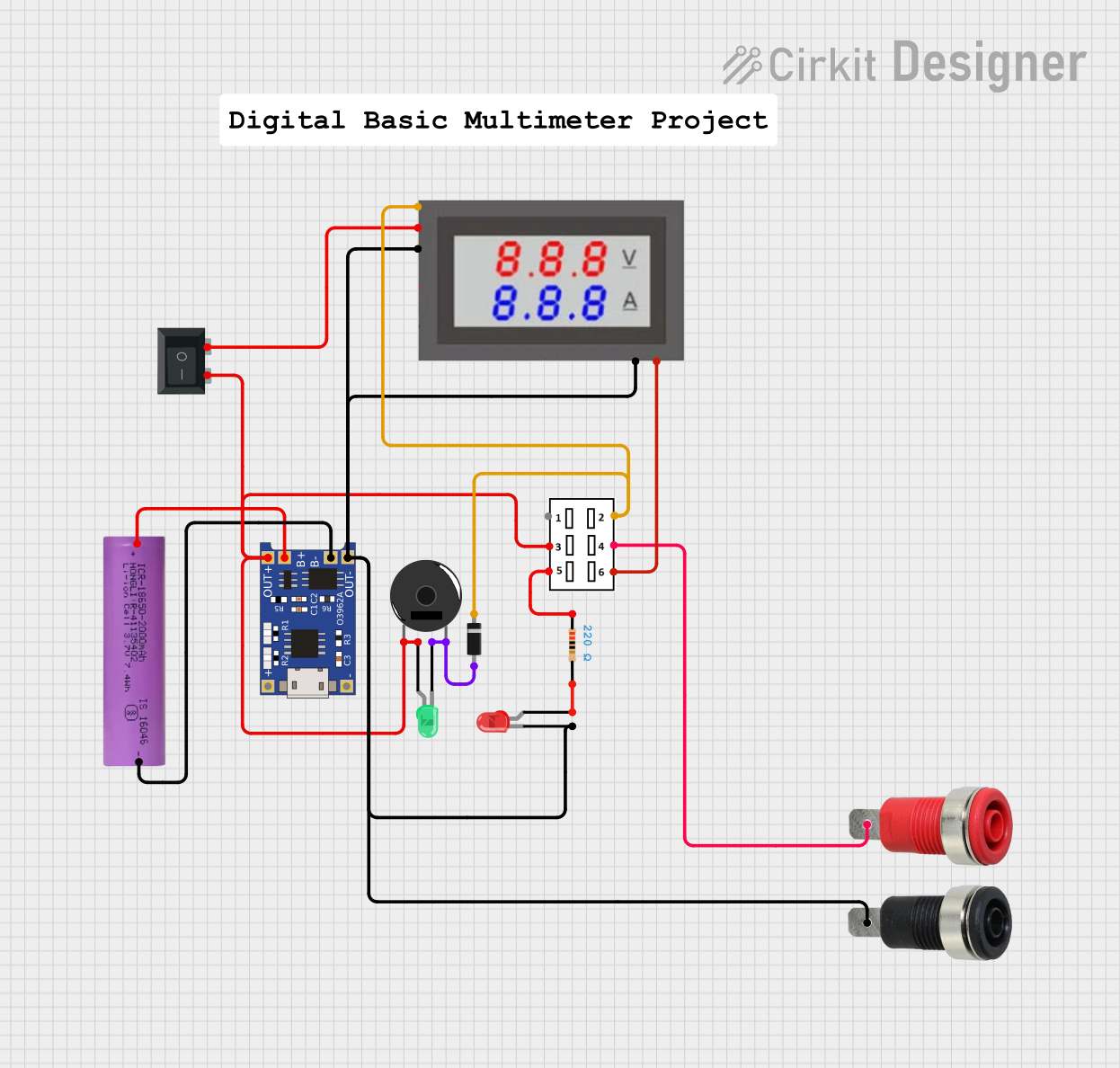
 Open Project in Cirkit Designer
Open Project in Cirkit Designer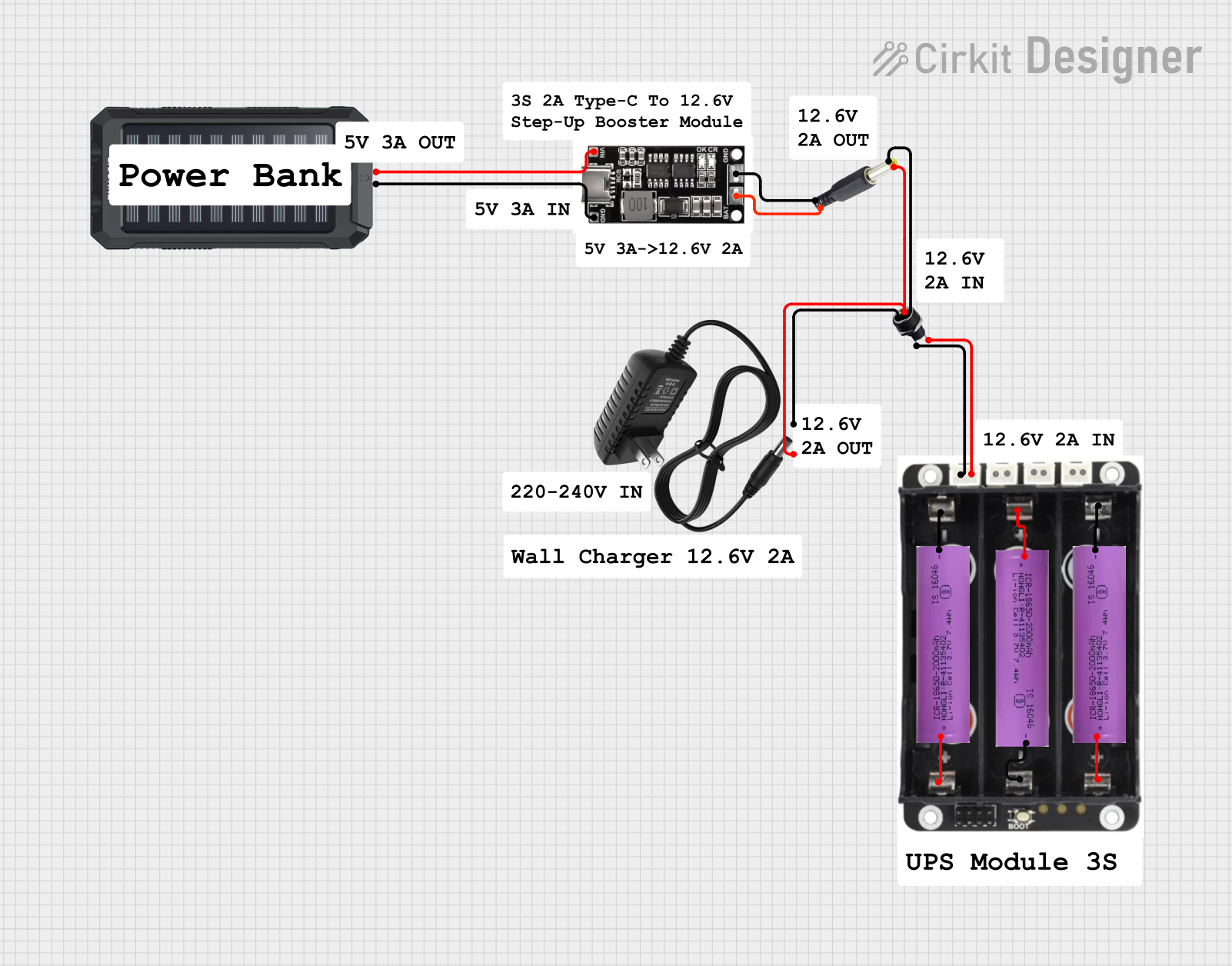
 Open Project in Cirkit Designer
Open Project in Cirkit DesignerExplore Projects Built with LiPo Battery 3.7 V 1050mAh

 Open Project in Cirkit Designer
Open Project in Cirkit Designer
 Open Project in Cirkit Designer
Open Project in Cirkit Designer
 Open Project in Cirkit Designer
Open Project in Cirkit Designer
 Open Project in Cirkit Designer
Open Project in Cirkit DesignerCommon Applications
- Portable electronic devices (e.g., MP3 players, handheld gaming consoles)
- Remote-controlled drones, cars, and boats
- Wearable technology (e.g., fitness trackers, smartwatches)
- IoT devices and sensors
- Backup power for small embedded systems
Technical Specifications
Key Specifications
| Parameter | Value |
|---|---|
| Nominal Voltage | 3.7 V |
| Capacity | 1050 mAh |
| Chemistry | Lithium Polymer (LiPo) |
| Charge Voltage | 4.2 V (maximum) |
| Discharge Cutoff Voltage | 3.0 V (minimum) |
| Standard Charge Current | 0.5C (525 mA) |
| Maximum Charge Current | 1C (1050 mA) |
| Standard Discharge Rate | 0.5C (525 mA) |
| Maximum Discharge Rate | 1C (1050 mA) |
| Dimensions (L x W x H) | 60 x 34 x 5.0 mm |
| Weight | ~20 g |
| Connector Type | JST 2-pin (commonly used) |
Pin Configuration
The LiPo battery typically comes with a JST 2-pin connector. The pinout is as follows:
| Pin Number | Pin Name | Description |
|---|---|---|
| 1 | Positive | Battery positive terminal |
| 2 | Negative | Battery negative terminal |
Note: Always verify the polarity of the connector before connecting the battery to a circuit to avoid damage.
Usage Instructions
How to Use the LiPo Battery in a Circuit
Connection:
- Connect the battery's JST 2-pin connector to the corresponding socket on your device or circuit.
- Ensure the polarity matches (red wire to positive, black wire to negative).
Charging:
- Use a LiPo-compatible charger with a constant current/constant voltage (CC/CV) charging profile.
- Set the charging voltage to 4.2V and the current to 0.5C (525mA) for standard charging.
- Avoid overcharging or charging at currents higher than 1C (1050mA).
Discharging:
- Ensure the load does not draw more than 1C (1050mA) to prevent overheating or damage.
- Do not discharge the battery below 3.0V to avoid permanent capacity loss.
Mounting:
- Secure the battery in your device using double-sided tape or a battery holder.
- Avoid puncturing or bending the battery during installation.
Important Considerations and Best Practices
- Safety First: Never short-circuit the battery terminals. This can cause overheating, fire, or explosion.
- Storage: Store the battery at room temperature (20–25°C) and at a charge level of 40–60% for long-term storage.
- Protection Circuit: Use a battery management system (BMS) or protection circuit to prevent overcharging, over-discharging, and short circuits.
- Temperature Limits: Operate the battery within the temperature range of 0°C to 45°C for charging and -20°C to 60°C for discharging.
Example: Using the Battery with an Arduino UNO
To power an Arduino UNO with the LiPo battery, you can use a DC-DC boost converter to step up the 3.7V to 5V. Below is an example circuit and code:
Circuit Setup
- Connect the battery's positive terminal to the input of the DC-DC boost converter.
- Connect the battery's negative terminal to the ground of the boost converter.
- Connect the output of the boost converter (5V and GND) to the Arduino UNO's 5V and GND pins.
Arduino Code Example
// Example code to blink an LED using Arduino UNO powered by a LiPo battery
const int ledPin = 13; // Pin connected to the onboard LED
void setup() {
pinMode(ledPin, OUTPUT); // Set the LED pin as an output
}
void loop() {
digitalWrite(ledPin, HIGH); // Turn the LED on
delay(1000); // Wait for 1 second
digitalWrite(ledPin, LOW); // Turn the LED off
delay(1000); // Wait for 1 second
}
Note: Ensure the boost converter is configured to output 5V before connecting it to the Arduino UNO.
Troubleshooting and FAQs
Common Issues and Solutions
| Issue | Possible Cause | Solution |
|---|---|---|
| Battery not charging | Charger not compatible or faulty | Use a LiPo-compatible charger |
| Device not powering on | Incorrect polarity or loose connection | Verify polarity and secure connections |
| Battery overheating during use | Excessive discharge current | Reduce the load to within 1C (1050mA) |
| Reduced battery capacity over time | Overcharging or deep discharging | Follow proper charging/discharging practices |
FAQs
Can I use this battery for high-current applications?
- This battery supports a maximum discharge rate of 1C (1050mA). For higher currents, consider a battery with a higher capacity or discharge rating.
How do I know when the battery is fully charged?
- A LiPo-compatible charger will stop charging when the voltage reaches 4.2V.
What happens if I discharge the battery below 3.0V?
- Discharging below 3.0V can cause permanent damage to the battery and reduce its capacity.
Can I connect multiple batteries in series or parallel?
- Yes, but ensure you use a proper balancing circuit to maintain equal voltage across all cells.
By following this documentation, you can safely and effectively use the LiPo Battery 3.7 V 1050mAh in your projects.